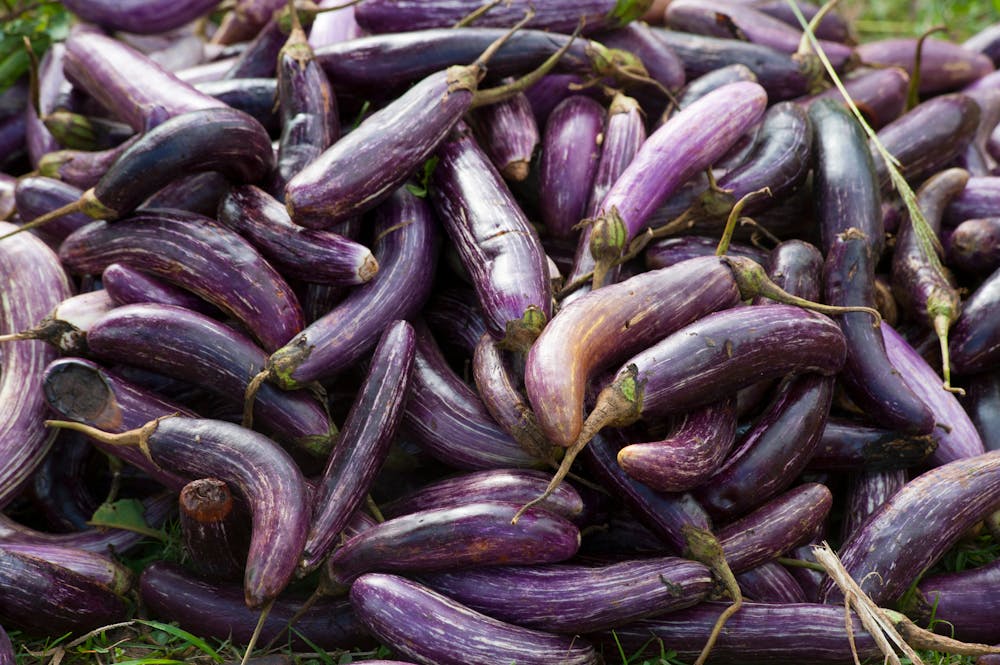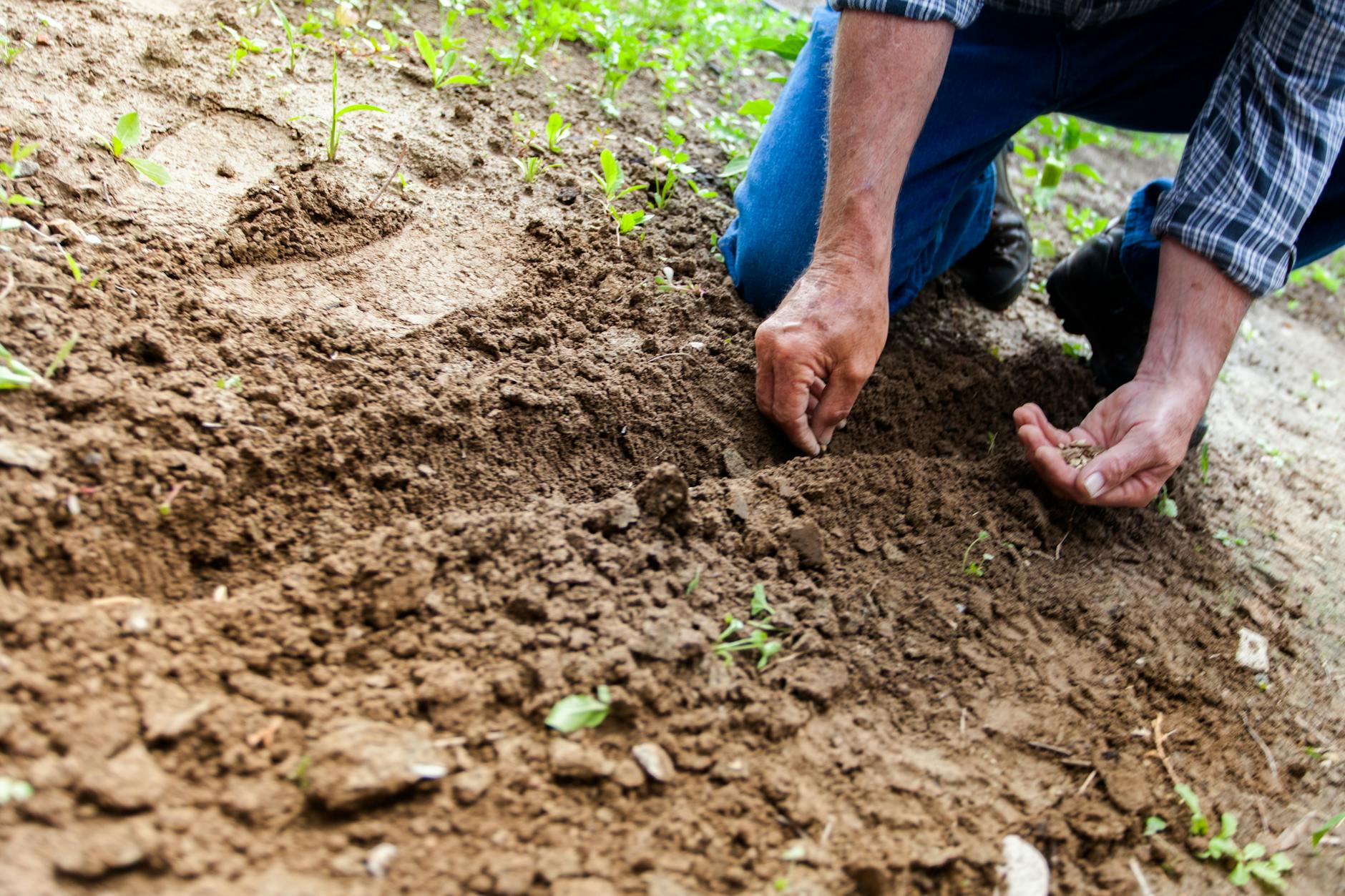Learn how to grow eggplant while spring is making way for summer. Indeed, eggplants are summer plants, but it's never too early to plan on growing this humble vegetable. Equip yourself with this simple growing guide and smart tips to grow eggplant this season!
Learn How To Grow Eggplant And Never Buy Eggplant Again
Eggplants are a recent addition to my diet and it was only last year that I tried growing them in my garden. Surprisingly, successful on my first try, so I doubt you will have trouble yourself even as a beginner. If you haven't tried eggplants in both your garden and in your dishes, it's high time you start considering this humble vegetable. You'll find eggplants are versatile, easy to prepare and best of all, easy to grow. Find out for yourself how easy it is to learn how to grow eggplant as you read on!
All About Eggplants

Eggplant is an interesting vegetable which is also called aubergine, especially in Europe where they're quite popular. However, eggplants are said to have originated or domesticated in South and East Asia. They come from the Solanum family, the same as potatoes, peppers, and tomatoes. Much like tomatoes, eggplant grows in bushes, growing up to 4 feet and taller. Its skin color may be varied but the meaty flesh inside is an all white that readily turns brown after exposure. Eggplants are usually eaten cooked and the texture and flavor are greatly improved with preparation.
When To Grow Eggplants
In the tropics, where it is widely cultivated, eggplants are perennials grown during the summer months. In temperate climates, they are half-hardy annuals which are also grown from late spring throughout summer. Since eggplants require up to 10 hours of sunlight, you must wait till the ground becomes warm enough for outdoor growing. You can grow eggplants in zones 4 to 10 once the soil has warmed up.
Where To Grow Eggplants
As previously stated, eggplants like it hot, so they need to be grown in an area where they can get full sunlight without anything to shade the plants. Eggplants can be prolific too, so situate the plant beds in a spacious area where the air can circulate. Growing them in containers or in raised beds can be advantageous if you're starting early since the soil warms up faster that way.
Eggplant Varieties
When we think about eggplant, what readily comes to mind is an elongated, glossy purple vegetable. But there are dozens of eggplant varieties and sometimes, different sizes, shapes, and color to a variety. There is even a variety that looks exactly like an egg, both in shape and color–it's like a plant went and bore eggs! An unusual vegetable is the Petch Siam eggplant is an egg-shaped variety but green in color with white streaks.
There is white, green and purple color in either short or long eggplant varieties and there are plump variegated varieties. Almost all types have the same nutritional content and taste but the dark purple variety in the ‘black magic', is said to contain three times the amount of antioxidant phenolics in any other eggplant variety.
How To Grow Eggplant From Seeds
Choose which plant variety you want to try and you can buy the seeds in garden stores. If you have access to heirloom varieties, you might want to give this a try first especially if you're a beginner.
Step 1. Start Eggplant Seedlings

Start seeds indoors or in a homemade greenhouse once danger of frost has passed. Prepare seed starting pots with compost or a rich organic garden soil. Depending on the size of the pots, you can plant 2 to three seeds which you can thin after. Eggplant seeds will germinate in about ten days and will be ready for transplanting in 6 to 8 weeks.
Step 2. Transplanting Seedlings

Prepare your plant bed ahead with soil rich in compost and set the seedlings in a row 24 inches apart. Dig holes where the seedlings are set, deep and wide enough to plant the seedlings. Plant the seedlings, firm the soil around each plant, then give your plant bed a good watering to set the plants.
Step 3. Caring For Eggplant
Spread organic mulch around your plants immediately after planting. This will help keep the foliage warm and dry, and the roots moist and cool. Continue to water the eggplants regularly and watch out for pests like flea beetles which feed on the leaves. You can grow marigold, thyme, and catnip with or near eggplant to help the plant. Make sure to give your eggplants support since they can be heavy laden with fruits once they begin to flower.
How To Grow Eggplant In Container
Growing eggplants in containers will allow you to grow these veggies earlier since the soil in containers warms up faster. Growing in containers will also help you deal with weeds and pests conveniently. In fact, these troubles are less likely to bug you when growing eggplants in containers.
Transplanting Eggplant Seedlings In Containers
Prepare containers with drainage holes and fill them with organic garden soil. You can also spread first a layer of perlite or pumice to improve drainage. A dark-colored container is also more likely to warm up faster than light-colored ones. Dig a hole in the center of the container deep and wide enough for the seedlings, then plant away.
Caring For Eggplant In Container
Water your eggplants regularly with a boost of nutrients in the form of organic fertilizer. Since they are grown in containers, they won't be able to source it outside, except when manually administered. Although pests are less likely to trouble you when growing eggplants in containers, it's still worth giving it a line of defense through companion planting. You might also want to give your eggplant some support with stakes.
Give Eggplants A Hand To Flower
Eggplants are heavy feeders, but if you want more fruits than foliage, give the plant less nitrogen when giving fertilizer. Although eggplants are self-pollinating, you might also want to give it a hand since bees are not overly drawn to the flowers. Take out a small paint brush and gently brush off the pollen in each flower.
More Tips For Growing Eggplants
Eggplants are ready for harvest once the fruit skin has taken on a high gloss. I even like to harvest them earlier when the seeds are young and few. If you want to collect seeds from the fruit for next planting season, just leave the fruit on the plant until the fruit dries up, then you can take the fruit to collect the seeds.
I've seldom read about this in growing guides but experience proves to be valuable. As you harvest more fruits, the top branches will start to dry up and bear no more fruits. You can prune or cut off the top branches and new shoots will start to grow from the stem near the base. This will give you more fruit though smaller in size.
You can also check this video for a step-by-step guide for planting eggplants:
Don't you just love the variety in your vegetable garden and in your table? Eggplants will definitely make a great addition to your already colorful vegetable garden. As spring comes to a close, make room for eggplants in your summer garden crops to grow this season!
If you've got questions or additional tips, I'd be delighted to hear all about them. Leave your comments below.
Care to try growing fruits as the season heats up? Cantaloupe would be perfect and you can try growing them with this guide in growing cantaloupe from seeds here.
Don’t forget to follow us on Facebook, Instagram, Pinterest, and Twitter for more smart gardening ideas!
Feature image source via Tried and True







1 thought on “How To Grow Eggplant From Seeds | A Garden Season Guide”
We ordered Egg Plant seeds several weeks ago BUT Just got them yesterday; a week before the first day of summer. I am not sure we will have time to plant and get fruit off the pants by planting them this late. ANY Suggestions ?